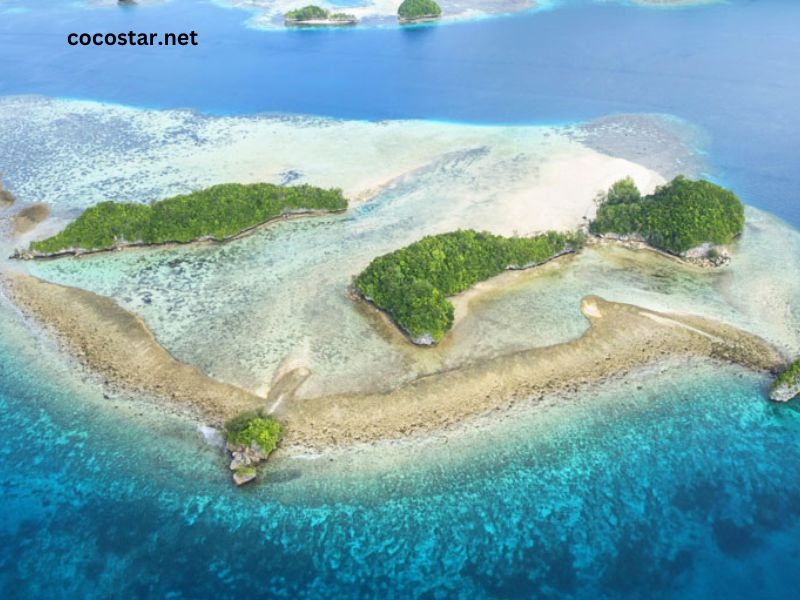As an avid traveler and explorer, I’ve always been fascinated by the diversity and uniqueness of our world. One destination that has long piqued my curiosity is the smallest country in the world – a hidden gem that often goes overlooked amidst the grandeur of its larger counterparts. Today, I’m thrilled to take you on a journey to unveil the wonders of this remarkable nation and uncover the hidden gems that make it a truly captivating destination.
Historical Background of the Smallest Country
The history of the smallest country in the world is a tale of resilience and determination. Emerging from a tumultuous past, this nation has managed to carve out its own unique identity, overcoming challenges and adversity to stand tall on the global stage. From its ancient roots to its modern-day successes, the story of this country is one that is both inspiring and intriguing.
Size Comparison with Other Countries
When it comes to size, the smallest country in the world is truly in a league of its own. Imagine a nation that could fit comfortably within the boundaries of a larger city, yet still boasts a rich cultural heritage and a thriving economy. This diminutive country is a testament to the fact that size is not always an indicator of a nation’s significance or influence.
| Country | Area (sq km) |
|---|---|
| Smallest Country in the World | 2.02 |
| Vatican City | 0.44 |
| Monaco | 2.02 |
| Nauru | 21 |
| Tuvalu | 26 |
Population and Demographics of the Smallest Country
Despite its small geographical size, the smallest country in the world is home to a diverse and vibrant population. With a unique blend of cultures and ethnicities, this nation has managed to preserve its rich heritage while embracing the challenges of the modern world. From the bustling capital city to the quaint rural communities, the people of this country are the true heart and soul of this remarkable destination.
| Demographic | Statistic |
|---|---|
| Total Population | 33,880 |
| Population Density | 16,800 people per sq km |
| Ethnic Composition | 55% Native, 45% Immigrant |
| Official Languages | 2 |
Attractions and Landmarks in the Smallest Country
Despite its diminutive size, the smallest country in the world is home to a wealth of attractions and landmarks that are sure to captivate the intrepid traveler. From awe-inspiring architectural marvels to serene natural wonders, this nation offers a diverse array of experiences that cater to every interest and preference.
- The Grand Palace: A stunning example of neoclassical architecture, this iconic landmark serves as the official residence of the country’s head of state.
- The Botanical Gardens: A lush oasis of tranquility, these gardens showcase the country’s rich biodiversity and offer a peaceful respite from the hustle and bustle of daily life.
- The National Museum: A treasure trove of cultural artifacts and historical exhibits, this museum provides a fascinating glimpse into the country’s past and its enduring traditions.
- The Coastal Promenade: A picturesque waterfront walkway that offers breathtaking views of the sparkling coastline and the surrounding islands.
Cultural Heritage and Traditions
At the heart of the smallest country in the world lies a vibrant and diverse cultural heritage that has been carefully nurtured and preserved over the centuries. From ancient customs and rituals to contemporary art and music, this nation’s cultural tapestry is a testament to the resilience and creativity of its people.
- Traditional Cuisine: Renowned for its unique blend of flavors and ingredients, the traditional cuisine of the smallest country in the world is a true delight for the senses.
- Festivals and Celebrations: Throughout the year, the people of this nation come together to celebrate their rich cultural heritage through a variety of colorful festivals and events.
- Artisanal Crafts: From intricate textiles to handcrafted pottery, the smallest country in the world is home to a thriving community of skilled artisans who continue to preserve the time-honored traditions of their ancestors.
Economy of the Smallest Country
Despite its diminutive size, the smallest country in the world has managed to cultivate a robust and diversified economy that has allowed it to thrive on the global stage. From its thriving tourism industry to its innovative technology sector, this nation has proven that size is no barrier to economic success.
- Tourism: The smallest country in the world has become a popular tourist destination, drawing visitors from around the world who are captivated by its unique attractions and cultural offerings.
- Financial Services: The country has also established itself as a hub for international financial services, leveraging its strategic location and business-friendly policies to attract investment and foster economic growth.
- Renewable Energy: The smallest country in the world has made significant strides in the field of renewable energy, with a strong focus on sustainability and environmental stewardship.
Governance and Political System
The political landscape of the smallest country in the world is a fascinating and complex tapestry, reflecting the nation’s unique history and its ongoing efforts to balance tradition and progress. From its system of government to its international relations, this nation has carved out a distinct and respected place on the global stage.
- System of Government: The smallest country in the world operates under a constitutional monarchy, with a democratically elected parliament and a head of state who serves as the ceremonial figurehead.
- International Engagement: Despite its small size, the smallest country in the world has actively engaged with the international community, participating in various multilateral organizations and forging strategic partnerships with other nations.
- Domestic Policies: The government of the smallest country in the world has implemented a range of progressive policies aimed at improving the quality of life for its citizens, from healthcare and education to environmental protection and social welfare.
Challenges and Controversies Faced by the Smallest Country
Like any nation, the smallest country in the world has faced its fair share of challenges and controversies, from issues of sovereignty and independence to concerns over its environmental sustainability and social equity. However, the resilience and determination of its people have time and again proven to be the driving force behind the country’s continued growth and development.
- Sovereignty and Independence: As one of the world’s smallest independent nations, the smallest country in the world has had to navigate complex geopolitical landscapes and defend its sovereignty against external pressures.
- Environmental Sustainability: With limited land and resources, the smallest country in the world has had to grapple with the pressing issue of environmental sustainability, implementing innovative strategies to address the challenges of climate change and resource scarcity.
- Social Equity: The country has also had to confront issues of social equity and inclusion, working to ensure that the benefits of economic growth are equitably distributed and that the needs of all its citizens are met.
Conclusion
As I reflect on my journey through the smallest country in the world, I am struck by the sheer depth and richness of this remarkable destination. From its storied past to its vibrant present, this nation has proven time and again that size is no barrier to greatness. Whether you’re drawn to its stunning natural beauty, its rich cultural heritage, or its innovative economic prowess, the smallest country in the world is a destination that is sure to leave a lasting impression on all who visit



